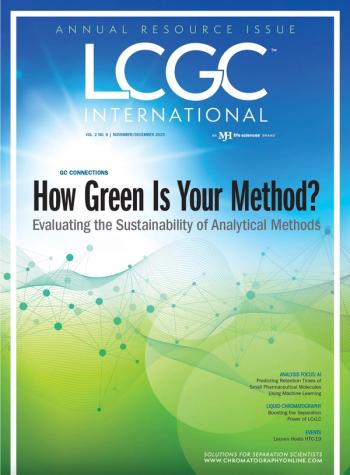
E-Separation Solutions
- E-Separation Solutions-07-13-2010
- Volume 0
- Issue 0
Degassing Water
What is the best way to degas water?
The answer to the following question was provided by LCGC’s “LC Troubleshooting” editor John Dolan.
Q: I am a student and I’m working on HPLC. I want to know how can you achieve maximum degassing by using vacuum. I filter water under vacuum and leave it overnight under vacuum. On the next day i use it to make my mobile phase. We have an built-in degasser but I want to make sure I remove most of the air from water so that I don't get any problems. What is the best way to degas water? I use 0.45-µm filters for filtration.
A: Unless you are a "belt-and-suspenders" type, the in-line degasser should be all that you need to use. All the data that I've seen show that in-line degassing is better than static degassing, as you are doing. In terms of stand-alone degassing, the general feeling is that you'll get better vacuum degassing if you place the flask in a sonicator while you degas, but I've never seen any hard data to support this. The only hard data that I've seen (1) show that vacuum degassing is most effective in the first 5–10 min; therefore overnight degassing is unlikely to improve things. Of course, the gold standard for degassing is helium sparging. Based on the data of reference 1, refluxing removes 100% of the dissolved gas, helium sparging ~80%, and vacuum 60–70%. Anything over ~50% should be satisfactory. So in answer to your question, unless you are seeing bubble problems with in-line degassing, I would not do any additional degassing.
(1) J.N. Brown, M. Hewins, J.H.M van der Linden, and J.H.M Lynch, J. Chromatogr.204, 115 (1981).
If you have a question you'd like answered, please submit them at
Articles in this issue
over 15 years ago
Continuous Flow Analysis & Discrete Analyzersover 15 years ago
SFCNewsletter
Join the global community of analytical scientists who trust LCGC for insights on the latest techniques, trends, and expert solutions in chromatography.



